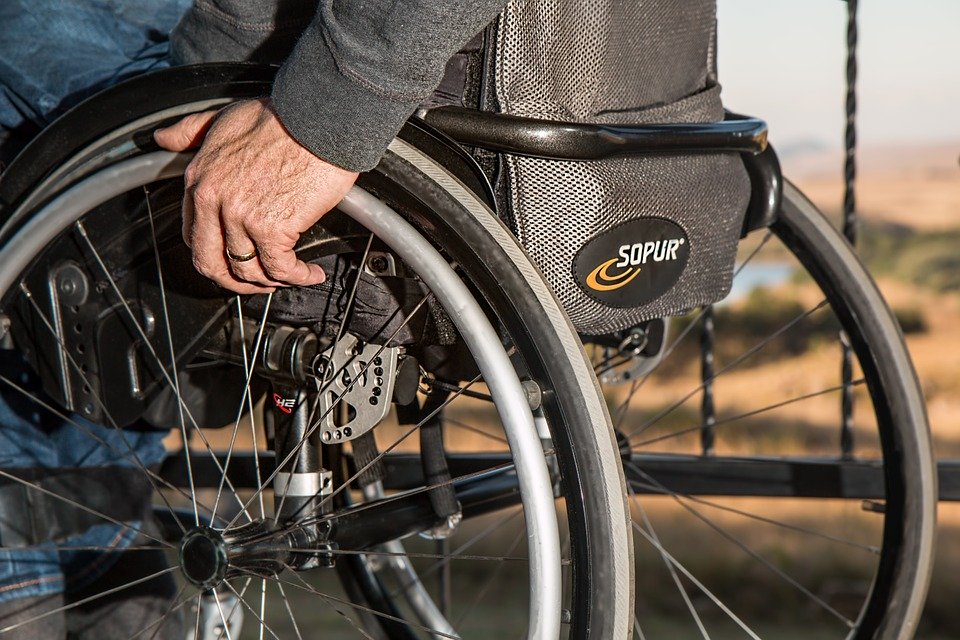How Permanent Partial Disability Works For Workers’ Comp

For California employees who don’t make a total recovery from their work-related injuries or illnesses, there are certain permanent disability benefits available to them. Suppose your medical condition has stabilized, yet you still have chronic pain or other limitations due to your injuries. In that case, you may be eligible to receive long-term permanent disability benefits. Since states can alter their laws at any moment in time, it’s always a great idea to look through the current statutes discussed in this article and do your research on your local government stipulations. Read on to learn more about workers’ comp benefits you can receive, such as medical payments and temporary disability payment. Here’s how permanent partial disability works when it comes to workers’ comp.
Related: What Should You Expect At A Workers’ Comp Deposition?
What You Should Know About Partial Disability And Workers’ Comp

Permanent Disability award eligibility
To be eligible for permanent disability benefits in the state of California, your doctor must write a report about how your recovery process has plateaued. Your healing process is unlikely to go up within the next year or so, even with continued medical treatment. This specific plateau of recovery is labeled the “maximal medical improvement” (MMI) or “permanent and stationary” (P&S). After you’ve arrived at MMI, your temporary disability payments will stop. If you’ve managed to reach complete recovery and you’re able to return to work without any further limitations, then you also will not be eligible when it comes to permanent disability benefits. You may be entitled to compensation in the case that your injury or illness has resulted in permanent physical or mental limitations when it comes to the kind of work that you’re able to accomplish. In the legal jargon of workers’ compensation, this would be referred to as “permanent disability” (or P.D.).
Looking for a top workers’ compensation attorney? Call Invictus Law, P.C. today!
Total permanent disability
How much compensation is owed when it comes to the continual impact of your injury or illness will rest mostly on the extent of your disability. P.D. benefits come in two basic categories total and partial. You may be eligible for total P.D. only if you’re not expected to have the ability to work in any capacity for as long as you live. Total permanent disability is quite scarce. Only in certain severe situations (such as losing the use of both legs, losing sight in both eyes, or being a quadriplegic.) does the law presume that the injured employee in question is permanently disabled. In all other situations, only if their P.D. rating adds up to 100% are workers able to receive these benefits. If you achieve 100% P.D., you’re entitled to receive payments regularly in the same amount as your temporary disability benefits for the continuation of your life. This typically comprises two-thirds of your pre-injury average weekly wage, but with maximum and minimum amounts that are linked to the statewide weekly average wage (and are thus adjusted regularly).

Partial permanent disability
Any permanent disability that is less than 100% is thought of as a partial disability. The number of checks you receive along with the amount of time that these payments will go for all depends on your P.D. rating- the percentage of your disability (up to 99.75%).
Rating permanent disability
The process of rating your P.D. begins with one or more medical reports. First, your treating physician will compose a report (generally around the same time as the P&S report) assessing any permanent impairments that you have due to the injuries you have incurred. This refers to the specific amount you’ve lost the normal use of the injured portion of your body (or normal psychological functioning). For example, you may have a very limited range of motion in your knee, lower grip strength in your hand, or an amputated finger. Doctors have to comply with stipulated guidelines when it comes to describing your impairments. If the insurance company (or your) contests the conclusions made in the report, there is a procedure for choosing a qualified medical evaluator (QME) to give another expert opinion on the issues which are being disputed.
Physical Disability Rating
What the doctor’s report addresses will then be translated into a Permanent Disability rating- or the amount that your injury affects the type of work you are able to accomplish. The process of rating P.D. incorporates a complicated formula (also known as a “schedule”) that is stipulated by the state, taking into account your age and occupation along with your physical or mental limitations. Either your insurance company or attorney may ask about the Disability Evaluation Unit in California’s Division of Workers’ Compensation (DWC) finalizing the rating. This will automatically occur if you are unrepresented and are pursuing a QME.
Apportionment of permanent disability between old and new injuries
A pre-existing medical condition may not prevent you from receiving benefits under workers’ comp if your recent work-related injury or illness aggravated or “greenlit” that condition. When it comes to calculating P.D. benefits, however, the state of California stipulates that doctors need to “apportion” your permanent disability between the old and new injuries. Whenever applicable, the physician’s report has to establish what percentage of your permanent disability resulted directly from the work-related injury or illness that you are claiming, and what percentage was caused by other factors, such as previous injuries.
Related: Injured At Work Then Fired? Here’s What You Need To Do
Permanent disability payments: How much and how long
The amount of benefits every week for partial P.D., just like for total P.D., will typically consist of two-thirds of your average weekly wages. However, the upper and lower amounts will differ, depending on the date of your injury. For injuries incurred between 2014 and 2018, the minimum is $160 per week, and the maximum is around $290 per week. The biggest difference between partial P.D. payments and the weekly amount of total P.D. (though they are similar) depends on how long you receive those payments. Partial P.D. payments last for a certain number of weeks, considering the date of your injury and your P.D. rating. If you have a partial P.D. rating of at least 70%, then you’ll be entitled to receive smaller ongoing payments (known as a “life pension”) following the date of your injury, level, and pre-injury wages.
Related: How Does Workers’ Comp Work In California?

If your ability to work has been impaired, it’s important to seek legal counsel. Find a board-certified specialist in California Workers’ Compensation Law with Invictus Law, P.C., a top compensation defense law firm. We can successfully guide your claim and get you the compensation that you deserve.
Looking for legal counsel on your California workers’ comp case? Call Invictus Law, P.C. today!
